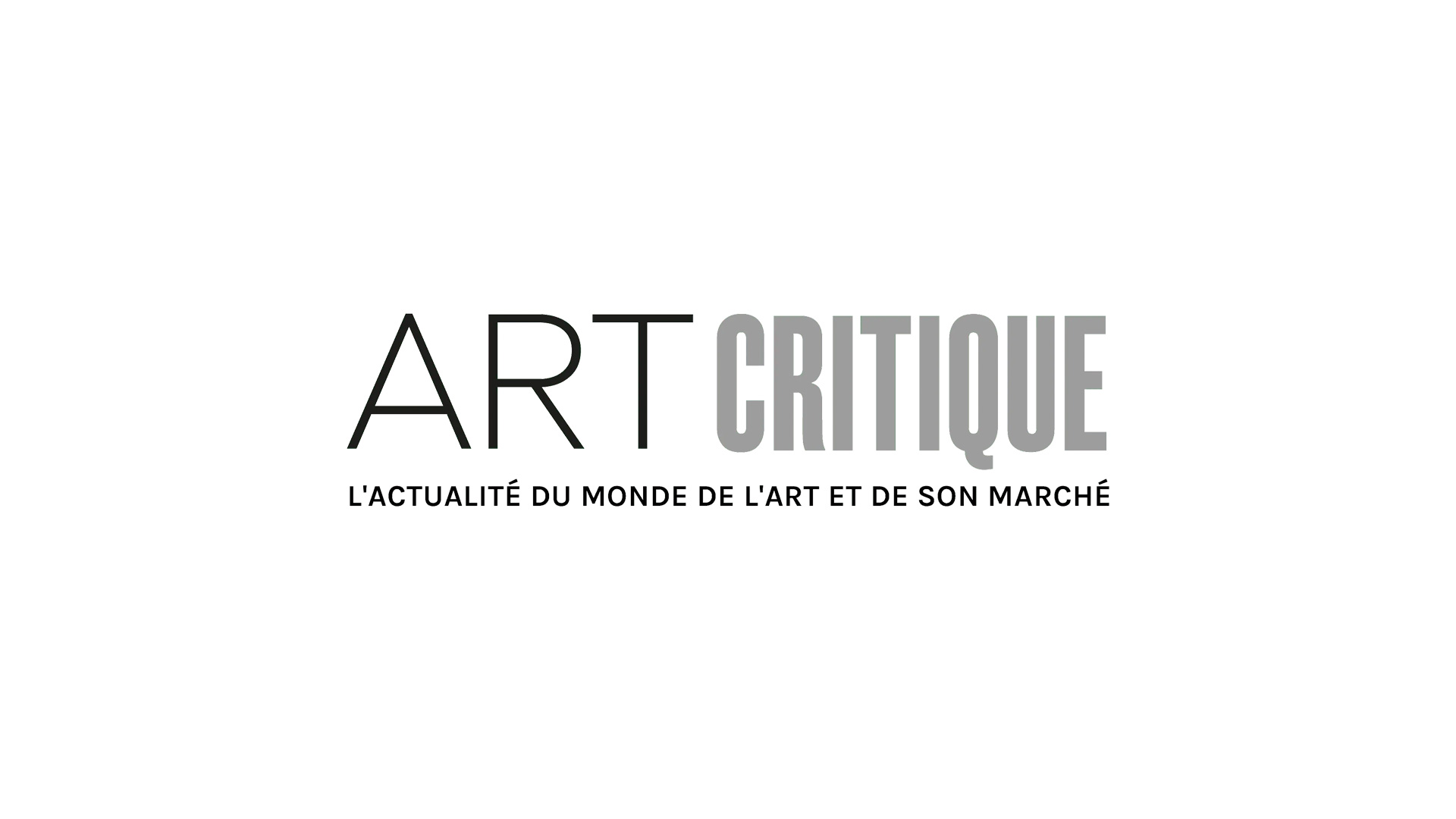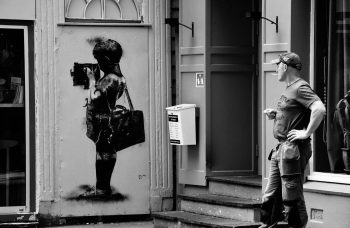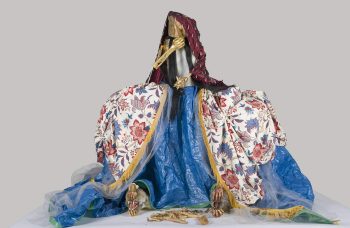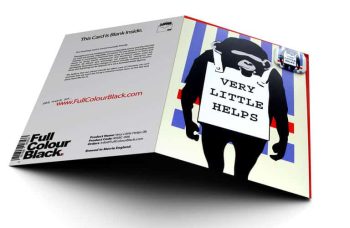While textiles, as a technology has been around for tens of thousands of years, textile arts have experienced a resurgence of interest in the last century. Long-associated with craft, textile artists have pushed against the boundaries of high art, working to erase the often negative connotations of the medium. In the 1970s, textile arts – which includes weaving, fibre arts, embroidery, carpet design, and a number of other art forms – saw a particular renaissance, but it was primarily looked at as “women’s work.” Since then, many artists have worked to bring the medium into the realm of fine arts, forcing viewers, critics, and the art world to see it as an equal to its art medium counterparts. Today, we take a look at five textile artists you should get to know.
Anni Albers
Nearly synonymous with textile art is Anni Albers. Born in 1899 in Berlin, Albers received her degree in weaving from the Bauhaus in 1930. After the Bauhaus School was dissolved under the growing Nazi party, Albers fled to the US with her artist husband Josef Albers, and began teaching at an experimental arts school in North Carolina called Black Mountain College.
Albers’ artistic vocabulary was influenced by places around the world where she studied. She was particularly took inspiration from Latin American countries and their traditions of weaving. Her works, which she called “pictorial weaving,” largely centre around pattern, texture, and line work. Albers’ works belong to some of the most prestigious collections in the world and continue to star in exhibitions today. Albers was pivotal in developing weaving as a discipline and in 1949, a solo show of her works at New York’s Museum of Modern Art was the first such exhibition at the museum to solely focus on textiles.

Judith Scott
After moving to California in 1986, Judith Scott, who was deaf and had Down Syndrome, was enrolled at the Creative Growth Art Centre in Oakland, an organization that offered creative space for people with disabilities, by her twin sister and legal guardian, Joyce. At the time, Scott showed little interest in art and had been relatively unexposed to art as she’d spent more than three decades as a ward of the state of Ohio. Then, in 1987, artist Sylvia Seventy introduced Scott to textiles and from there, Scott’s artistic career took off.
Wrapping found objects, from shopping carts to broom sticks, in yarn, fabric, and other fibres, Scott worked incessantly creating more than 200 cocoon-like works before her death in 2005. Ranging in size, her mixed media sculptures gained recognition and scholars dubbed Scott and “Outsider artist.” Each of Scott’s works were unique, never repeating a colour scheme or form, and they often took her weeks to months to complete. Today, her works can be found within the collections of the San Francisco Museum of Modern Art, The American Folk Art Museum in New York, and London’s Museum of Everything.

Sarah Zapata
Based in Brooklyn, but born in Texas in 1988, Sarah Zapata is a young textile artist whose work has been catching the art world’s eye in recent years. When she moved to New York, Zapata was weaving the pages of disused phone books and other banal items into sculptural works, reconfiguring their purpose. Today, she primarily works through performance and textiles, which she uses to push against the long-held association between textiles and “woman’s craft.”
Having studied the textile works of various cultures and movements, Zapata finds textiles fascinating because they’re something with which everyone has a relationship, no matter how much we don’t think about it. “That’s really exciting,” said Zapata to Metropolis in 2019, “to already have that baseline with the viewer, and yet you’re able to change that narrative.” Her shaggy, vibrant works are whimsical and tactile but touch on issues of gender, ethnicity, identity, technique, and pre-colonial histories.

Nick Cave
Nick Cave has an extensive background in dance and performance. Trained by the Alvin Ailey school, Cave is deeply interested in movement which is evident in his textile works. Life-size bodysuit sculptures, dubbed Soundsuits by the artist, are one of Cave’s most iconic series of work. Created to disguise the body, Soundsuits are made of various materials that make up a “second skin” devoid of gender, class, race, forcing viewers to look at other facets of their being
Cave, born in 1959, collects items from thrift shops and flea markets that attract his attention. Never sketching out his plans ahead of time, Cave might hold onto materials for years before utilizing them in one of his works. The Soundsuits he creates are meant to be worn and actually make noise as they move. In addition to working with issues of gender, race, and class, Cave’s ouvre is also rooted in issues of civic engagement, including gun violence.

Billie Zangewa
Your everyday life isn’t something you’d expect to find woven into a tapestry, but that’s exactly was Billie Zangewa does. After completing a degree in fine arts at Rhodes University, Zangewa mainly worked with oil paints, only working with textiles to create bags. After moving to Johannesburg, Zangewa began working in the fashion industry, which ignited her interest in silk “paintings.”
Today, she continues to work with silk to create depictions of her own life through the medium of tapestry, which is typically associated with religion as opposed to ordinary day-to-day life. Zangewa’s works are autobiographical but prevailing themes evolve as her life does. Each of Zangewa’s works are hand-sewn and, according to the artist, are her way of “expressing [herself] and embracing [her] femininity.” The fabric murals created by Zangewa are evocative and elevate the most mundane tasks to a higher level.

The Studio Museum in Harlem.





